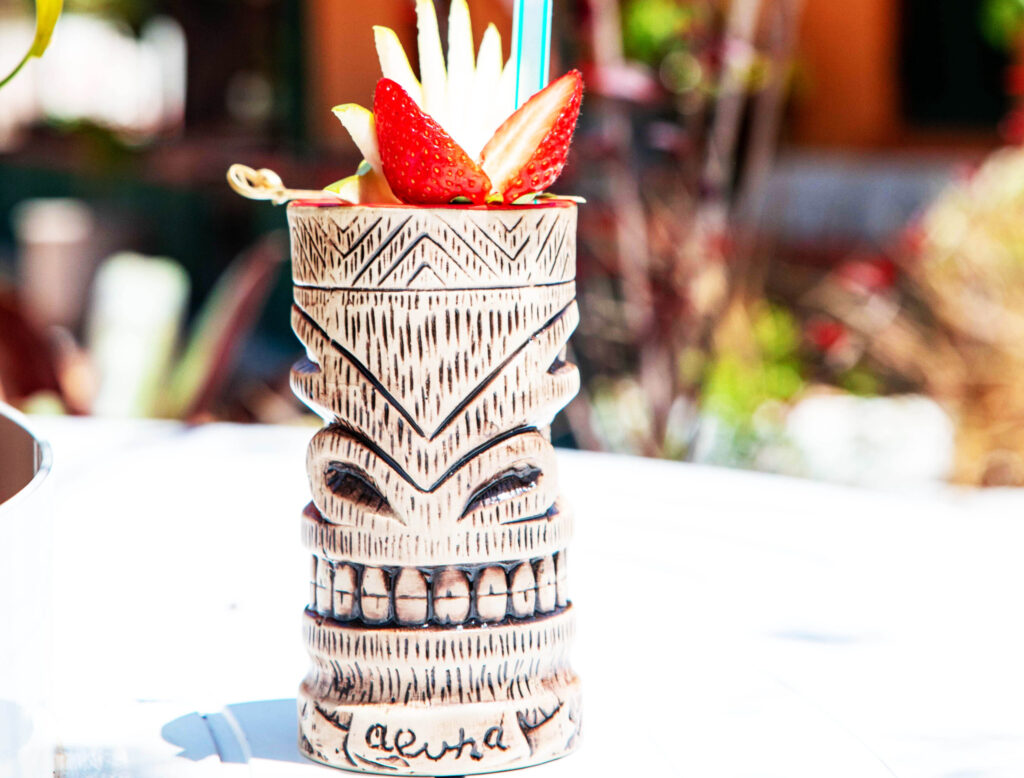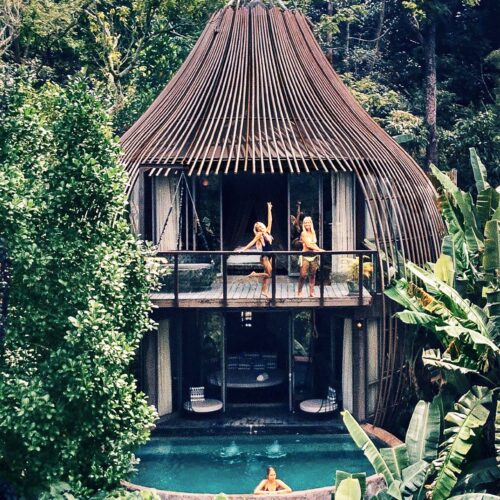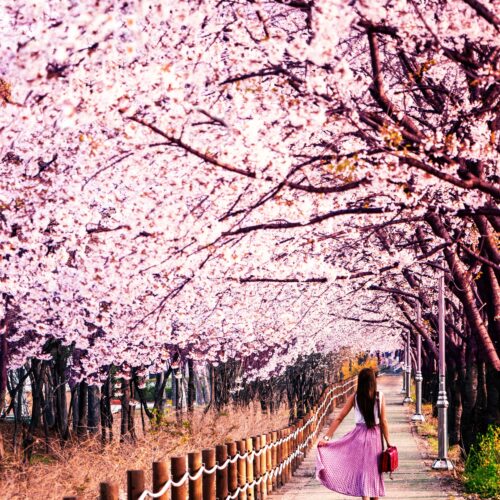
Tiki Bars are back! Discover the Tiki Craze That Swept the Nation (And Our Hearts) in the 50s and 60s – and How They’re Making a Comeback Today
The world of tiki bars is for you iff you’re a fan of kitsch, rum cocktails, and tropical escapism. This unique cultural phenomenon originated in the United States in the 1930s and 1940s, when Americans were captivated by exotic cultures and the idea of tropical paradise.
The tiki bar craze peaked in the 1950s and 1960s, with Polynesian-themed restaurants and hotels popping up all over the U.S. While the trend eventually faded, there has been a recent resurgence of interest in tiki culture and the iconic tiki bar, such as the Tiki Ti in Los Angeles.
So let’s take a trip back in time to explore the wacky and wonderful world of tiki bars…and why they’re still capturing our hearts today.
Here are some old-school tiki bars:
- Trader Vic’s, Emeryville, California: Trader Vic’s is one of the most iconic tiki bars in the world. It was founded by Victor Bergeron Jr. in 1934 and featured a Polynesian-inspired decor with bamboo, thatched roofs, and tikis. The bar is famous for its Mai Tai cocktail, invented by Bergeron in 1944.

- Don the Beachcomber, Huntington Beach, California: Don the Beachcomber is another iconic tiki bar founded by Ernest Raymond Beaumont Gantt in 1933. The bar features a tropical decor with rattan furniture, bamboo, and tiki statues. Don the Beachcomber is known for its strong and flavorful drinks, including the Zombie cocktail.
- Mai-Kai, Fort Lauderdale, Florida: The Mai-Kai is one of the oldest and most authentic tiki bars in the United States. It was founded by brothers Bob and Jack Thornton in 1956 and featured a traditional Polynesian decor with waterfalls, tikis, and hand-carved wooden statues. The bar is famous for its extensive rum selection and expertly crafted cocktails in specialty tiki glasses.
- Tiki Ti, Los Angeles, California: Tiki Ti is a family-owned tiki bar founded by Ray Buhen in 1961. The bar features a cozy, intimate atmosphere with vintage decor and a small but impressive cocktail menu. Tiki Ti is known for its potent and delicious drinks, including Ray’s Mistake cocktail.
- Kon-Tiki, Tucson, Arizona: Kon-Tiki is a classic tiki bar founded by Dean Short in 1963. The bar features a tropical decor with a thatched roof, bamboo, and various tiki statues. Kon-Tiki is known for its strong and flavorful drinks, including the Scorpion cocktail and the famous Kon-Tiki mug.
- The Tiki-Ti, Los Angeles, California: The Tiki-Ti was founded by Ray Buhen’s son and grandson in 1994 and featured a small and intimate atmosphere with vintage decor and a hand-painted mural. The bar is known for its creative and potent drinks, including the Blood and Sand cocktail and the Uga Booga.
- Smuggler’s Cove, San Francisco, California: Smuggler’s Cove is a modern tiki bar that Martin Cate founded in 2009. The bar features a nautical decor with various tiki statues and a selection of over 550 rums. Smuggler’s Cove is known for its expertly crafted cocktails, including the famous Three Dots and a Dash.
- Frankie’s Tiki Room, Las Vegas, Nevada: Frankie’s Tiki Room is a modern tiki bar founded by P Moss in 2008. The bar features a dark, moody atmosphere, vintage decor, and various tiki statues. Frankie’s Tiki Room is known for its strong and creative drinks, including the Fink Bomb and the Tiki Bandit.
- Hale Pele, Portland, Oregon: Hale Pele is a modern tiki bar founded by Blair Reynolds in 2012. The bar features a tropical decor with various tiki statues and a faux volcano that erupts every hour. Hale Pele is known for its extensive rum selection and expertly crafted cocktails, including the Painkiller and the Zombie Punch.
 Did you know?
Did you know?
The tiki convention, called Tiki Oasis is held annually in San Diego, California. Tiki Oasis is a four-day event that celebrates all things tiki, including music, art, fashion, and cocktails. The convention features live music performances, art exhibits, tiki vendors, symposiums, and cocktail competitions.
First held in 2001, it has since grown into the largest tiki event in the world. Each year, the convention has a different theme, such as “Catch the New Wave” or “Freaky Tiki.” Attendees are encouraged to dress in tiki-inspired outfits and participate in various activities and events.
A little history:
The tiki bar originated in the United States in the 1930s and 1940s, when Americans were fascinated with exotic cultures and tropical escapism. The Polynesian islands inspired the concept of the tiki bar and their unique culture, popularized by Hollywood movies, travel literature, and World’s Fairs.
The first tiki bar was likely to Don the Beachcomber, founded by Ernest Raymond Beaumont Gantt in Hollywood in 1933. Gantt, who later changed his name to Donn Beach, created a tropical atmosphere with rattan furniture, bamboo, and tiki statues. Don the Beachcomber was known for its exotic cocktails, such as the Zombie, which became a sensation in Hollywood and beyond.

Another pioneer of tiki bars was Victor Bergeron Jr., who founded Trader Vic’s in Oakland in 1934. Bergeron also created a tropical atmosphere with bamboo, thatched roofs, and tikis. He is credited with inventing the Mai Tai cocktail in 1944, which became one of the most popular tiki drinks ever.
During the 1950s and 1960s, the tiki bar reached the height of its popularity. Tiki bars could be found all over the United States and were often associated with Polynesian-themed restaurants and hotels. The tiki bar craze began to wane in the 1970s as tastes shifted toward other cuisine and entertainment.
However, there has been a resurgence of interest in tiki culture and tiki bars in recent years. Modern tiki bars have emerged, which pay homage to the old-school tiki bars of the past while incorporating new and creative elements. Tiki culture continues to be a source of fascination for many Americans, symbolizing tropical escape and exotic adventure.


